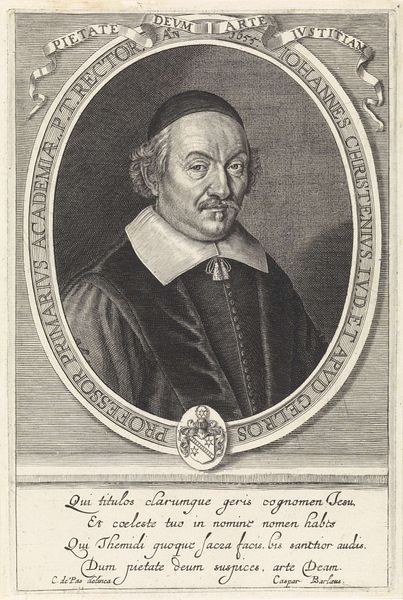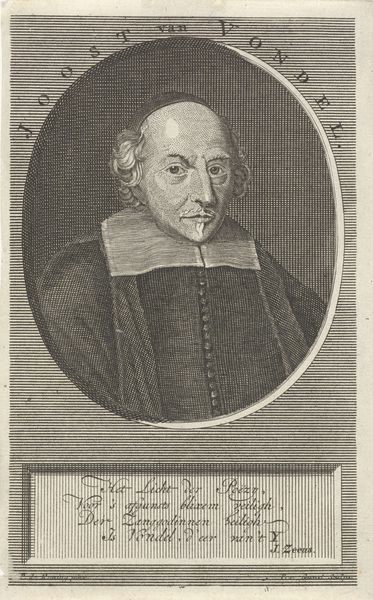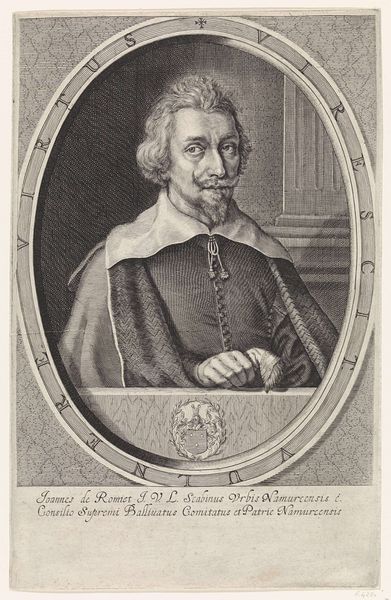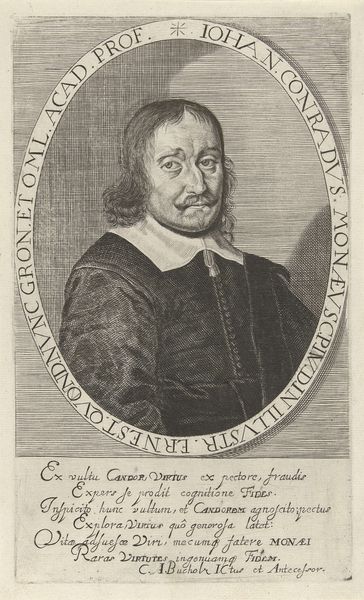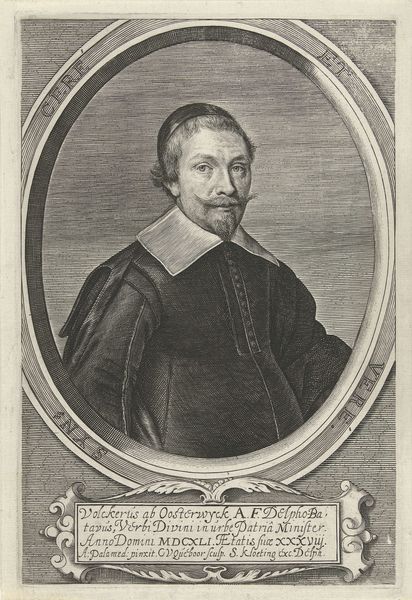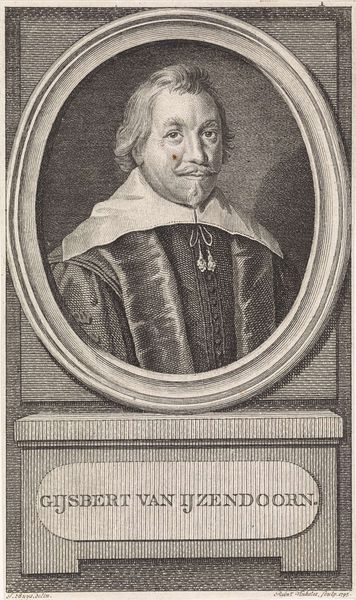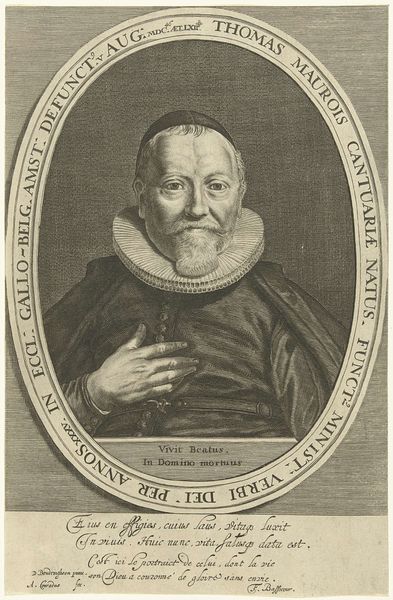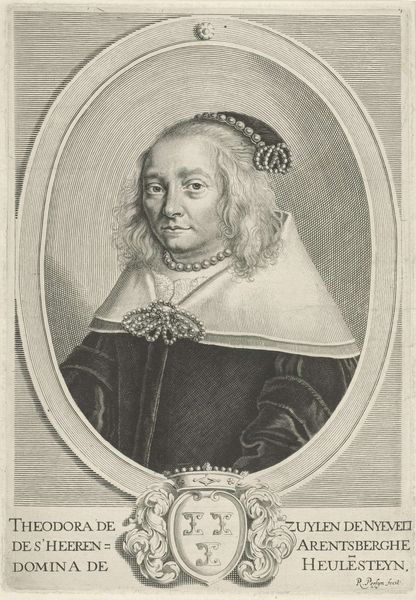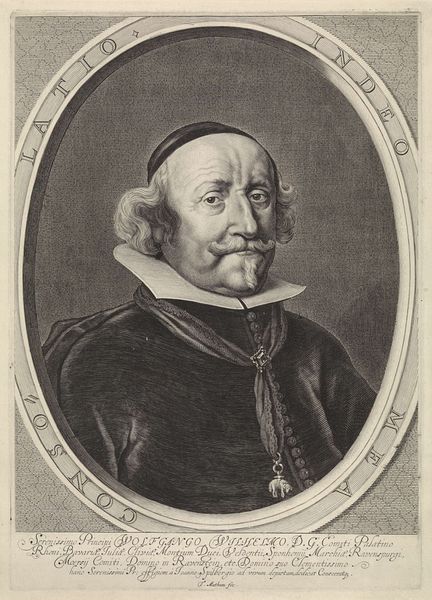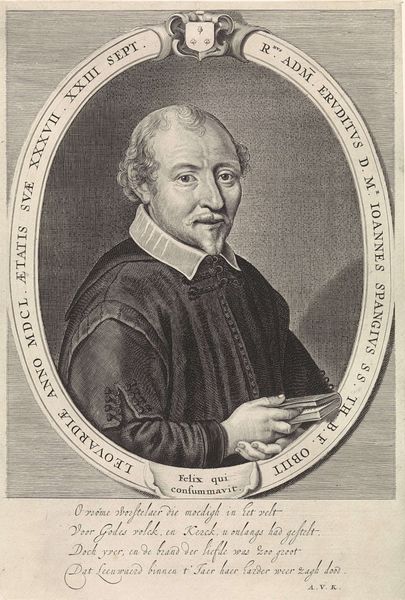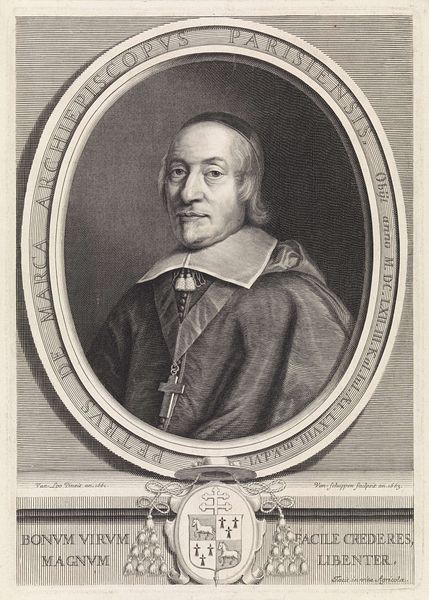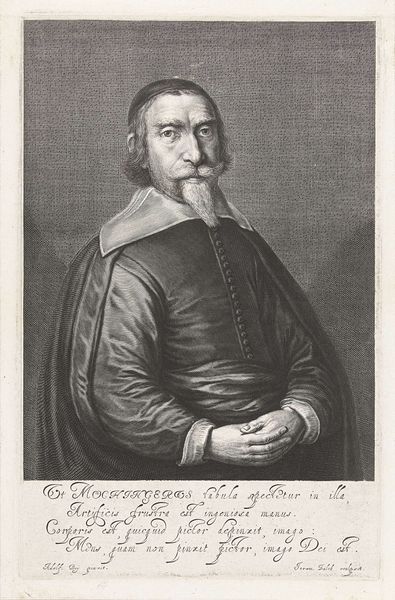
engraving
#
portrait
#
baroque
#
portrait image
#
charcoal drawing
#
line
#
portrait drawing
#
engraving
#
portrait art
#
fine art portrait
Dimensions: height 399 mm, width 265 mm
Copyright: Rijks Museum: Open Domain
Curator: Here we have an engraving titled "Portret van Pieter Spiering," dating from sometime between 1615 and 1676, held here at the Rijksmuseum. The artist is Theodor Matham. Editor: It feels... stately. Very Baroque, with all that detail achieved through line work. Even in monochrome, the presence is imposing. You immediately get a sense of a particular era and perhaps the sitter's status within it. Curator: Spiering, indeed, was a rather significant figure. A merchant, diplomat, and art collector in his time. One immediately notices the emphasis on his clothing: that broad, flat collar, the meticulously rendered buttons on his doublet. Matham certainly put emphasis on capturing the textile qualities through his technique of engraving. Think of the copperplate, and the sharp tools needed to score these delicate lines that convincingly mimic texture. Editor: And notice how the oval frame and the blank tablet at the base serve to enhance the portrait’s symbolic weight, offering space, traditionally for titles or emblems but here... void. It invites speculation about the legacy he wished to leave or perhaps what Matham, or Spiering himself, felt was most important to convey. Curator: The tablet left blank...interesting. To consider the labor and time involved in the engraving process, juxtaposed against that vacant space—a site, I agree, ripe for meaning yet deliberately left unfulfilled... Perhaps a comment on the burgeoning merchant class, always seeking to define itself. Editor: Perhaps. Or even reflecting on the fleeting nature of earthly status. All these incredibly wrought material signifiers pointing toward something fundamentally... absent. Consider how we continue to use portraiture as a method to connect across time; Matham is creating a document laden with intentional symbolism. Curator: It highlights how intertwined materiality and symbolism can become. This portrait, a product of intense physical labor and specific tools acting upon particular materials, transcends its purely material existence. Editor: Ultimately, it's this interplay—between the depicted status, the mode of production, and the void at its base—that truly makes it engaging. Curator: Agreed. The dialogue between materiality and absent meaning is what resonates across centuries.
Comments
No comments
Be the first to comment and join the conversation on the ultimate creative platform.
